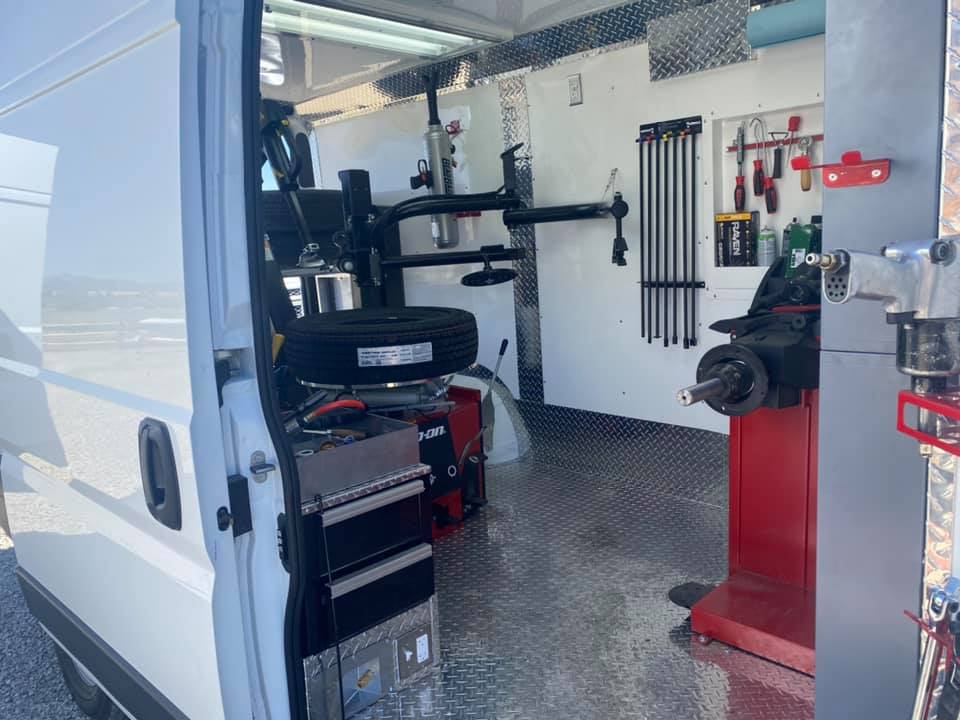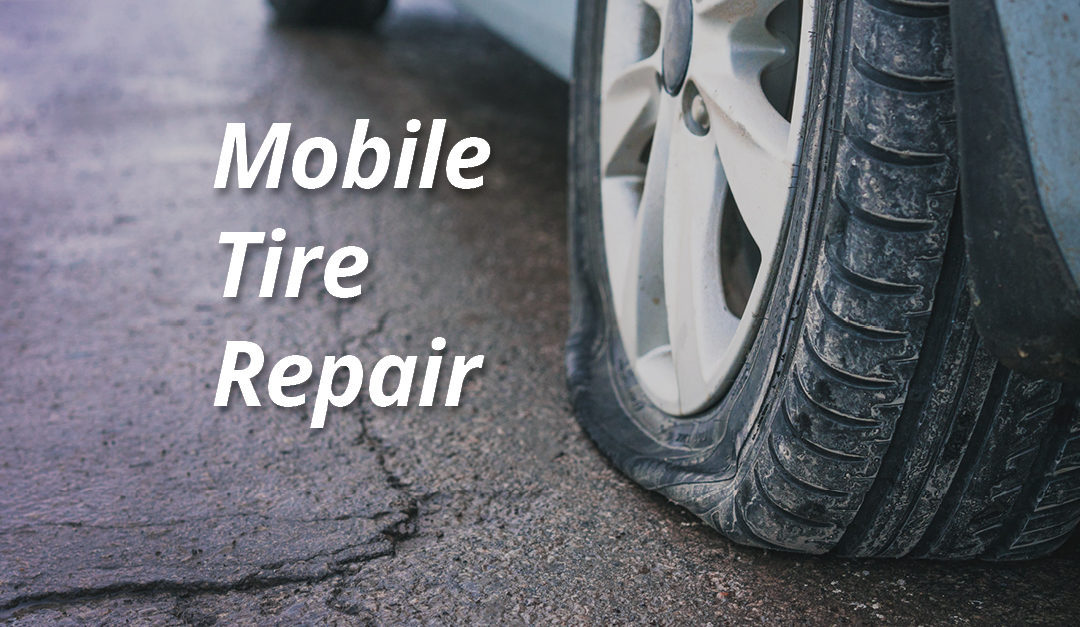Tire Solution: Proven Approaches for Optimal Tire Upkeep and Care
From making sure proper tire pressure to regular turning and positioning, there are tested approaches that can substantially expand the lifespan of your tires and enhance total driving experience. Allow's dig right into the globe of tire solution and discover the secrets to keeping your tires in first-class shape for the lengthy haul - Flat Tire Repair Las Vegas.
Relevance of Tire Stress
Appropriate tire pressure is an important factor in making sure optimum vehicle efficiency and security when traveling. Keeping the advised tire stress degrees given by the maker uses many benefits. First of all, ample tire pressure promotes better gas effectiveness, as under-inflated tires can cause enhanced rolling resistance, creating the engine to function harder and consume even more fuel. Secondly, correct tire pressure ensures even step wear, improving tire longevity and saving money in the future by postponing the need for early substitutes. Furthermore, appropriately pumped up tires add to boosted handling and stopping abilities, important for secure driving in various road conditions. Over-inflated tires, on the various other hand, can result in lowered traction and a harsher trip. Conversely, under-inflated tires are vulnerable to getting too hot, which can cause crashes and blowouts. Routinely checking and adjusting tire pressure, particularly before long journeys, is a basic yet efficient means to boost vehicle efficiency, prolong tire life-span, and prioritize safety and security when traveling.
Tire Rotation Guidelines
When thinking about tire turning standards, it is important to comprehend the relevance of this upkeep task in making best use of tire lifespan and keeping ideal lorry efficiency. Tire turning includes transforming the setting of each tire on a car to make sure also step wear. Front tires tend to put on extra quickly than rear tires due to guiding forces, making routine turning crucial for balanced wear patterns.

Benefits of Wheel Alignment
Ensuring proper wheel positioning after tire rotation is vital for keeping balanced wear patterns and maximizing car efficiency. In addition, appropriate wheel placement aids to extend the life-span of your tires. Misaligned wheels can create irregular tire wear, leading to premature tire substitute and enhanced upkeep prices.

Tire Tread Deepness Check
Carrying out a routine evaluation of tire walk deepness is necessary for keeping secure driving conditions and prolonging the life expectancy of your tires. The walk on your tires plays a crucial function in providing grip, specifically in slippery or wet problems. To check your tire step deepness, you can make use of a step depth scale or the cent test. The advised step depth goes to i was reading this least 2/32 of an inch. If the tread deepness is listed below this limit, it is time to change your tires to make sure optimal efficiency and safety when driving. Uneven step wear can show concerns with tire suspension, pressure, or positioning, highlighting the significance of regular walk deepness checks. Neglecting to keep an eye on and maintain correct step deepness can lead to lowered hold, longer braking ranges, and an enhanced danger of hydroplaning. By incorporating tire tread depth explore your regular maintenance routine, you can drive with confidence understanding that your tires are in leading problem.
Seasonal Tire Assessment
A thorough analysis of tire problem customized to certain climate condition is vital for keeping optimum performance and safety throughout the year. Seasonal tire assessment is a fundamental element of tire maintenance that ensures tires are all set to encounter the difficulties positioned by different climate problems. In prep work for wintertime, it is necessary to check the tire stress frequently as cold temperatures can cause tire stress to drop. Checking tire tread depth is likewise crucial to ensure appropriate grip on snow and ice-covered roadways. Additionally, looking for indicators of deterioration, such as fractures or lumps, can assist stop potential tire failures. As the periods change, it is essential to evaluate tire problem and make any type of required adjustments to guarantee safe driving. By carrying out regular seasonal tire evaluations, motorists can extend tire lifespan, boost fuel effectiveness, and most significantly, guarantee a safe driving experience in differing weather - Mobile Tire anonymous Change Las Vegas.
Final Thought
To conclude, maintaining appropriate tire pressure, turning tires routinely, lining up wheels appropriately, keeping track of tread deepness, and conducting seasonal assessments are essential methods for ideal tire treatment. By adhering to these verified approaches, vehicle drivers can ensure their tires last much longer, execute much better, and add to general lorry safety and security. It is essential to focus on tire upkeep to stop accidents, boost fuel efficiency, and lengthen the life-span of tires.
Appropriate tire stress advertises better gas effectiveness, as under-inflated tires can lead to increased rolling resistance, causing the engine to function more challenging and take in more gas.When thinking about tire rotation guidelines, it is important to recognize the importance of this maintenance task in maximizing tire lifespan and this hyperlink keeping optimum lorry performance. Seasonal tire assessment is a fundamental element of tire upkeep that guarantees tires are ready to encounter the challenges posed by various weather problems. By performing regular seasonal tire assessments, vehicle drivers can lengthen tire life-span, boost gas efficiency, and most notably, make certain a secure driving experience in differing weather problems.
In verdict, preserving proper tire stress, rotating tires regularly, aligning wheels appropriately, keeping an eye on step deepness, and performing seasonal inspections are important practices for optimal tire care.
 Anthony Michael Hall Then & Now!
Anthony Michael Hall Then & Now! Katie Holmes Then & Now!
Katie Holmes Then & Now! Nancy Kerrigan Then & Now!
Nancy Kerrigan Then & Now! Barbara Eden Then & Now!
Barbara Eden Then & Now! Naomi Grossman Then & Now!
Naomi Grossman Then & Now!